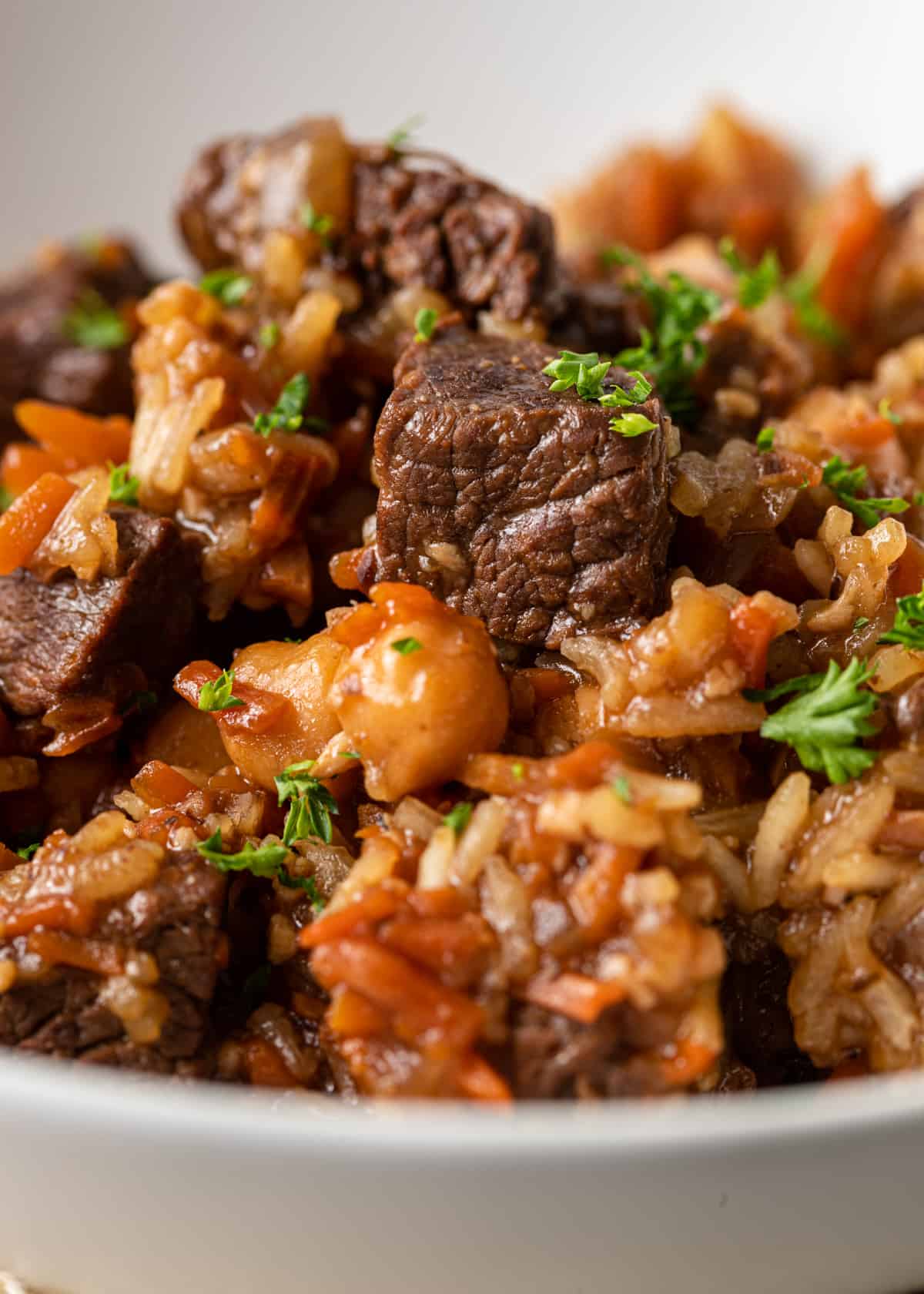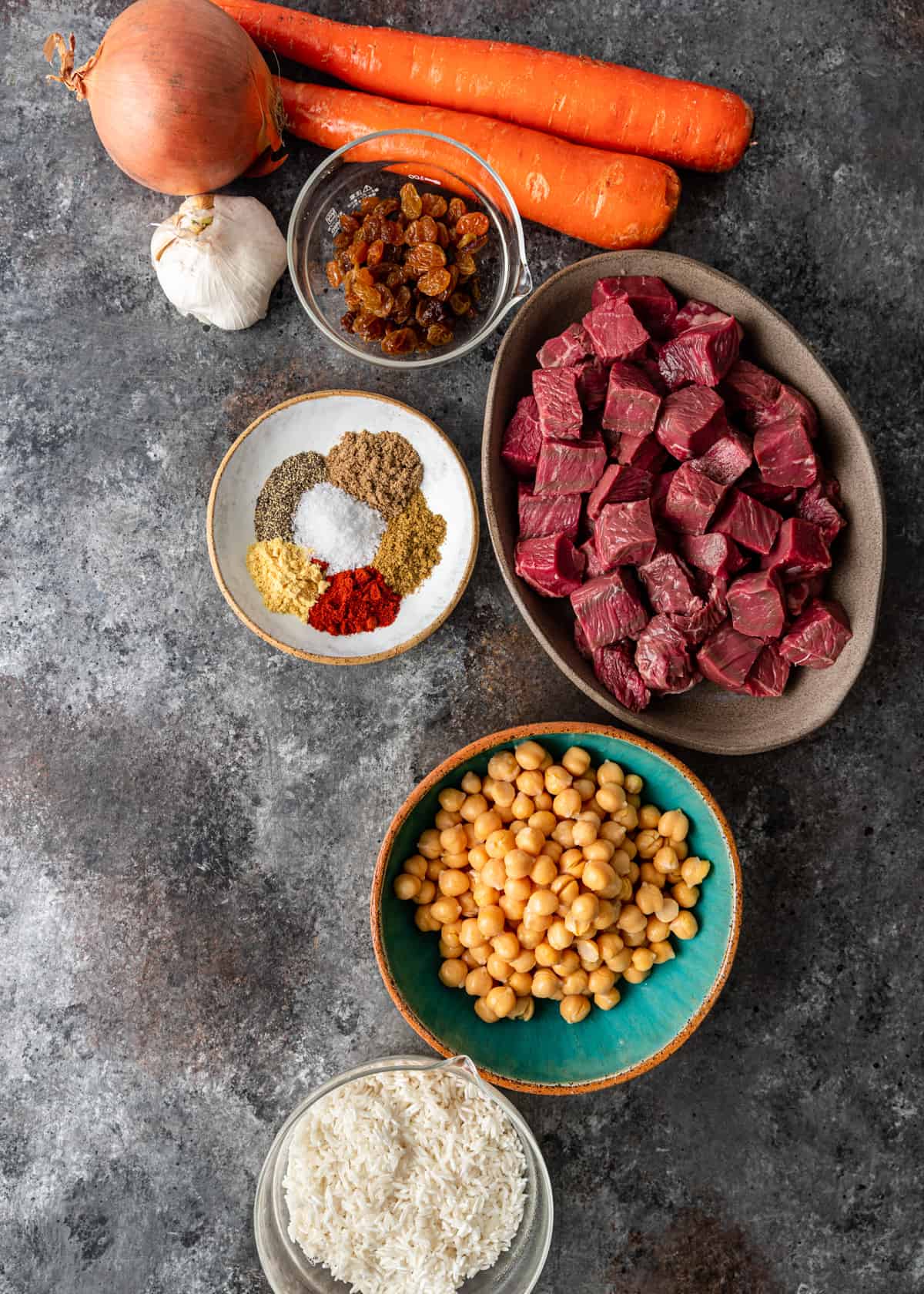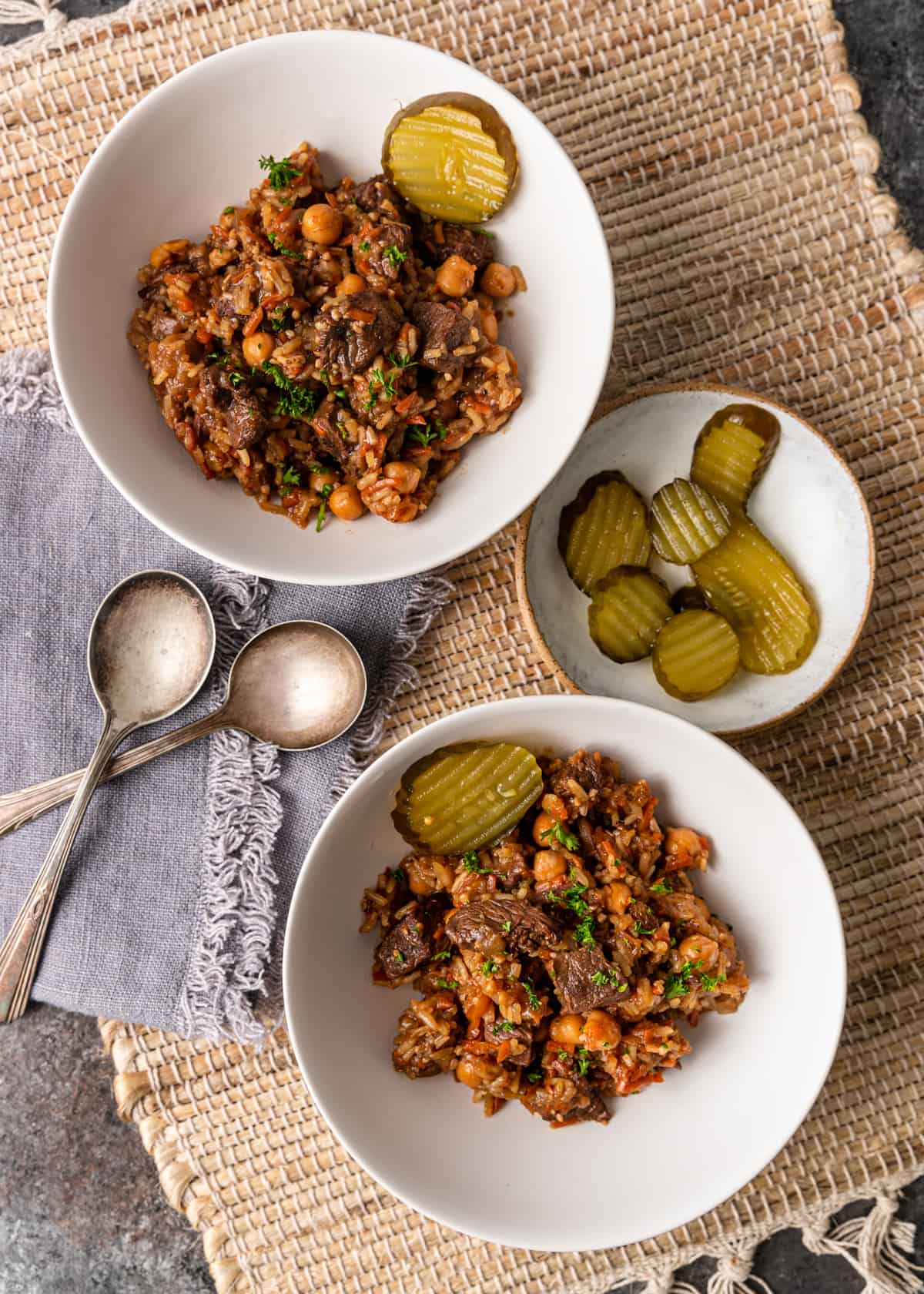published Sep 05, 2022 I’ve been slowly but surely adding to my Balkan and Caucasus recipe box! These are recipes out of places like Georgia, Serbia, Crimea, Slovenia, and Ukraine. If you like this type of cuisine as much as I do, I definitely recommend that you check out my recipes for chebureki (meat hand pies), this Georgian cheese bread called khachapuri, or cevapi, which are Balkan skinless sausages. Next up on my list of recipes to try and share is this beef plov. It originated in Uzbekistan, and many other countries now have their own take on it. My favorite is the Ukrainian version. It’s made with savory pieces of beef, chickpeas for even more added protein, and a smattering of vegetables and spices. The added golden raisins are a beautiful pop of sweetness, too.
INGREDIENT NOTES AND SUBSTITUTIONS
Beef – I like to use beef chuck or beef sirloin for my plov. Whatever type you use, make sure to cut it into 1-inch pieces. Onion – The onion works with the other ingredients and adds a distinct flavor when sautéed alongside the vegetables.Garlic – My absolute favorite flavor enhancer for all savory dishes!Carrots – You’re going to want to work with shredded carrots here. Beef Broth – Use broth instead of water for even more added flavor.Chickpeas – To make things easier, use chickpeas from a can.Golden Raisins – This special and unexpected ingredient adds an interesting dimension to the dish. Vegetable Oil – To brown the beef and sauté the vegetables.Salt & Pepper – You don’t need to add much to the meat to bring out its natural flavors. A bit of S&P does the trick just fine.Coriander – This spice is nutty, floral, and citrusy.Cumin – Another one of my favorite spices to add to savory dishes. Ground Mustard – Sharp and fresh, ground mustard works well with beef.Smoked Paprika – Much smokier and spicier than traditional varieties, it adds a punch to this take on beef rice pilaf.Long Grain Rice – I like Jasmine or Basmati best.Pickles & Hard Boiled Eggs – For serving!
HOW TO MAKE BEEF PLOV
- Prepare The Rice. To start, rinse the rice in cold water in a sieve until the water runs clear. Place it in a bowl, then cover with 1-inch of water and set aside for later.
- Brown The Beef. Place a Dutch oven or deep-sided sauté pan over medium-high heat. Season the cubed beef with salt and pepper and place inside the pan with a bit of oil. Stir often so that it browns — this step usually takes 3-5 minutes. Remove the beef from the pan when finished.
- Sauté The Veggies & Meat. In the same pan, add the onion, carrot, and garlic and sauté until they become golden brown, or about 5 minutes. Place the beef back in the pan and add the salt, coriander, cumin, ground mustard, and smoked paprika. Stir and cook for about a minute. Next, add the broth and bring the mixture to a boil. Cover, then reduce the heat to low and allow to simmer for 90 minutes. The meat should be tender when done.
- Add The Rice. Stir in your chickpeas and golden raisins, then add the uncooked rice. Don’t stir! The rice should form an even layer on top, and make sure that it’s covered in about ½ inch of broth. You can add more broth if you need to.
- Allow To Cook. Cover and let your beef plov cook over low heat for 30 minutes, or until the rice is done and the liquid has evaporated. Take it off of the stove and let it sit for 10 minutes uncovered.
- Mix Together. Fold the rice and beef together to form your beef plov. If you’d like, you can serve it with pickles and hard-boiled eggs for an authentic Ukrainian meal.
What Does Plov Consist Of?
Plov is an Uzbek dish made with rice and some sort of meat. It is also sometimes called pilaf or palov. Although the meal originated in Uzbekistan, other Balkan and Eastern European countries have their own versions. The meat is typically beef or lamb!
Can I Freeze Plov?
Absolutely! This recipe freezes up really nicely. Simply make it as instructed on the recipe card below and allow it to cool completely. Transfer it to a freezer-safe dish and place it inside your freezer. It will keep for up to 6 months! To reheat it, you can place it in the oven or in a skillet. Let it thaw in the fridge overnight for best results.
Why Is My Beef Rice Pilaf Mushy?
If you end up with a mushy beef rice pilaf, it means that the rice has absorbed too much liquid. Simply allow the rice, broth, and meat mixture to cook for a little longer, uncovered, until the excess moisture cooks off. Make sure to keep an eye on it so that it doesn’t burn.











